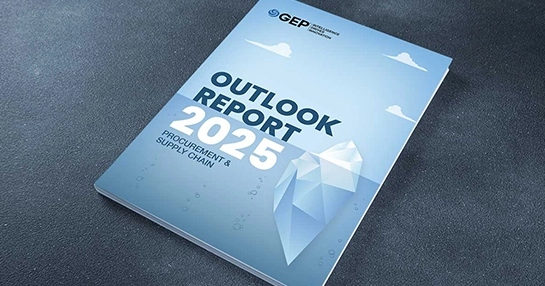
How Procurement Can Prepare for AI Adoption
- Leading firms have started deploying AI in procurement and supply chain operations.
- Data quality and team readiness, not software, are still the biggest barriers.
- Success depends on rethinking roles, not just adding tools.
November 17, 2025 | Procurement Software 3 minutes read
Procurement’s Job Just Got Harder
Procurement used to be predictable — negotiate, approve, and move on. But the world has changed. Supply shocks, climate risks, and price volatility have made that rhythm impossible to sustain.
The recent Harvard Business Review Analytic Services report, developed with GEP, paints a clear picture: the companies thriving today are the ones rebuilding procurement for speed, resilience, and intelligence, not just cost control.
An automaker now uses predictive analytics to adjust sourcing around global events. A consumer goods brand spots supplier risks weeks in advance. A pharmaceutical firm has shortened contract cycles by nearly a third. None of this came from technology alone. It came from changing how people work with it.
What Holds Procurement Back
It’s easy to blame technology gaps, but the harder truth lies elsewhere. Most organizations have plenty of tools — they just don’t connect with each other. Data lives in silos, making it hard to see the full supply picture.
As Jan Olesen of Indorama Ventures put it, “Without clean data, the best AI won’t work. AI is only as good as what it’s trained on.” His team invested first in data readiness — unglamorous work, but essential — before scaling digital tools.
The other hurdle is change fatigue. Teams know automation can help, but they fear losing control. IHG Hotels & Resorts tackled this by pairing new systems with hands-on training. Employees who piloted the tools became trainers themselves, showing peers how to apply them to real workflows. That approach built trust faster than any top-down memo could.
As Everest Group’s Amy Fong notes, even the best pilots fail if organizations don’t involve the people running the processes. “You need a process to bring people along on the journey,” she says.
Explore 101 AI Use Cases
Real-world use cases that show how AI is transforming every stage of procurement
Where the Real Gains Come From
Once the data and mindset line up, improvements arrive quickly. Procurement teams use digital tools to process information faster, flag supplier risks earlier, and negotiate better terms — without adding headcount.
At IHG, digital procurement now handles spend analysis, contract creation, and supplier evaluation in real time. The result? Teams focus on high-value work like supplier innovation and sustainability instead of paperwork.
Indorama Ventures, meanwhile, uses predictive analytics to simulate disruptions — the kind of modeling no manual system could manage. That foresight helps its buyers choose stable partners and adjust before problems spread.
Across industries, the pattern is the same: digital procurement cuts response time, not just cost. It turns insight into a competitive advantage.
Getting Ready to Move Faster
The report outlines three essentials for procurement leaders serious about modernization:
- Start with the data. Digitize, clean, and consolidate. Even partial data integration beats scattered spreadsheets.
- Invest in people. Training builds confidence and helps teams see technology as a partner.
- Experiment — and accept imperfection. Not every pilot will stick. Roughly 70% of AI projects fail to scale, but the lessons they leave behind are invaluable.
IHG created a “procurement garage” to test ideas safely before rolling them out. Indorama took a “speed over perfection” approach — using federated data instead of waiting for a flawless single platform. Both companies moved faster because they didn’t chase perfection; they built momentum.
What Comes Next
Procurement’s future won’t be measured only in savings. It will hinge on how well teams manage risk, maintain resilience, and respond to disruption.
Gartner’s research shows that top-performing supply chains already use analytics and automation to optimize demand forecasting and fulfillment, while laggards still rely on manual coordination. The difference isn’t budget — it’s readiness.
Santosh Nair, GEP’s Chief Product Officer, summarizes it best: “The companies realizing meaningful returns from AI are doing more than deploying tools. They are rethinking workflows, reskilling talent, reorganizing teams, and investing in data governance. They treat AI not as a pilot but as infrastructure.”
That’s the takeaway: procurement doesn’t need more systems. It needs connected data, empowered teams, and the courage to rebuild around both.



